Exploring Saigon-Chợ Lớn – Vanishing Heritage of Hồ Chí Minh City by Tim Doling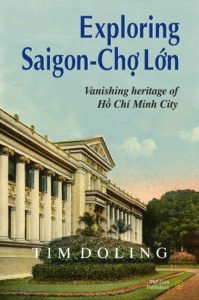
ISBN 978-604-77-6138-8
Thế Giới Publishers, Hà Nội, 2019
This is Tim’s second guidebook to the built heritage of the southern metropolis, and takes the form of a much expanded and improved version of his 2014 book “Exploring Hồ Chí Minh City.”
Now comprising over 680 pages, the book starts with an expanded overview of the historical development of Saigon-Chợ Lớn and a short section entitled “Saigon-Chợ Lớn built heritage under threat,” which considers the systematic destruction of built heritage in recent years and ways in which this issue might be tackled.
The book then presents no fewer than 21 self-guided tours aimed at independent travellers. These include 10 tours of Saigon and its suburbs, six tours in and around Chợ Lớn, and separate chapters on Gò Vấp, Thủ Đức & District 9, and Cần Giờ. It also includes a new chapter on nearby Biên Hòa, which has a long shared history with Saigon-Chợ Lớn. Each tour chapter includes larger and easier-to-follow route maps.
Throughout the book, historical material is supplemented by special box features on specific topics like Architect Marie-Alfred Foulhoux, Wang Tai and the Cochinchina Opium Monopoly, A History of Saigon Port, Saigon Tramway, Hui-Bon-Hoa (“Uncle Hoa”) and his family, A History of the Naval Port, Jean-Baptiste Louis-Pierre, Father of Saigon’s Greenbelt, the Spectacular Rise and Fall of Madame de la Souchère, The Tour de l’Inspection, Jean-Baptiste Pétrus Trương Vĩnh Ký (1837-1898), Quách Đàm – Chợ Lớn’s “King of Commerce,” The Canal Bonard and the “Three-Arch Bridge,” Trương Văn Bến and the Story of Cô Ba Soap, Dinner with “Tổng Đốc” Đỗ Hữu Phương, Tạ Dương Minh – Thủ Đức’s Founding Father, and Biên Hòa ceramics.
For art lovers, there’s also a short feature on “The Art Scene in Hồ Chí Minh City,” kindly contributed by Sophie Hughes.As always, the book ends with a directory of modern and historical street names of Saigon-Chợ Lớn.
Customers can purchase the book from local FAHASA bookstores or order from Nhà xuất bản Thế giới in Hà Nội – please contact Ms Vũ Thanh Thủy, Marketing & Distribution Department, 0168 955 5666, email vuthuynxbtg@gmail.com
Exploring Huế by Tim Doling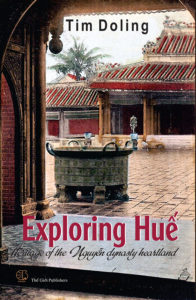
ISBN: 978-604-77-4226-3
Thế Giới Publishers, Hà Nội, 2018
Over 520 pages long and packed with useful maps and images, Tim Doling’s latest English-language guidebook, Exploring Huế (2018). takes visitors on a journey of discovery through the ancient Nguyễn dynasty heartland of Thừa Thiên Huế province.
Taking in over 500 years of Nguyễn dynasty history, it affords an opportunity to view and learn about the rich surviving built heritage associated with the nine Nguyễn lords and 13 Nguyễn emperors, their queens, princes, princesses and mandarins. It also introduces the Chinese heritage of Bao Vinh-Địa Linh and Gia Hội, the architecture of the French town south of the river, relics of the American War era, and the cultural traditions of the region’s ethnic minority groups. Visitors can choose from 23 different tours, covering Huế city and the province’s six districts and two district-level subdivisions.
The book was launched in the wake of Vietnamese Prime Minister Nguyễn Xuân Phúc’s January 2018 visit to Huế, in which he urged that more should be done to develop the tourism potential of the city he dubbed the “Kyoto of Viet Nam.” It is hoped that Exploring Huế will help to boost the Huế tourism sector by providing greater depth to the visitor experience and encouraging longer stays, more repeat visits and more sustainable tourism practices.
Customers can purchase the book from local FAHASA bookstores or order from Nhà xuất bản Thế giới in Hà Nội – please contact Ms Vũ Thanh Thủy, Marketing & Distribution Department, 0168 955 5666, email vuthuynxbtg@gmail.com
Exploring Quảng Nam by Tim Doling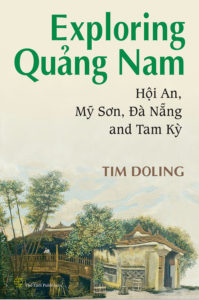
ISBN 978-604-77-4223-3
Thế Giới Publishers, Hà Nội, 2020
Over 500 pages long and packed with useful maps and images, Exploring Quảng Nam is aimed primarily at independent travellers who wish to learn more about the rich history and heritage of Đà Nẵng, Hội An and surrounding areas of Quảng Nam province.
It starts with a detailed historical overview of the region, once the heartland of the ancient Chàm kingdom of Amaravati, with its capital at Trà Kiệu and religious centre at Mỹ Sơn, a kingdom which derived much of its wealth from maritime trade. When the Nguyễn lords assumed power there in the late 16th century, they quickly recognised and exploited the potential of the former Chàm port of Faifo (Hội An) on the Thu Bồn River, subsequently generating sufficient wealth from taxation on foreign merchant shipping to finance an ambitious programme of conquest and settlement in the South. Meanwhile, their palace-fortress at nearby Thanh Chiêm (modern Điện Bàn) became a second Nguyễn dynasty capital, administered as an appanage of the Nguyễn Crown Prince, where visiting Jesuit missionaries were able to develop the earliest form of the Romanised Vietnamese language quoc ngữ.
Regarded initially as a gateway to Faifo, Đà Nẵng emerged in the early 19th century as a maritime port in its own right, largely as a consequence of the gradual silting of the Cổ Cò and Thu Bồn Rivers. In 1835, Emperor Minh Mạng declared it the sole international port permitted to receive Western ships, and in 1888, Đà Nẵng was transformed into the French concession of Tourane.
Notwithstanding its relative political and economic insignificance during the colonial era, Quảng Nam-Đà Nẵng re-emerged after partition in 1954 as a region of great strategic importance. Designated as the headquarters of the Army of the Republic of Việt Nam (ARVN)’s I Corps Tactical Zone in 1955, Đà Nẵng became a major US base after 1965, accommodating an estimated quarter of a million US, South Vietnamese and allied troops by 1968. Today, Đà Nẵng is one of the fastest-developing cities in Việt Nam, an important trade and tourism hub and beach resort which serves as a gateway to neighbouring Quảng Nam province, with its two UNESCO World Cultural Heritage Sites of Hội An and Mỹ Sơn.
The book’s 15 tour chapters take visitors on a journey of discovery through the wider region, with six suggested heritage tours in and around Hội An, five suggested heritage tours in and around Đà Nẵng, and additional suggested heritage tour routes for visitors to Mỹ Sơn, Hòn Lao island (Cù Lao Chàm), and Southern Quảng Nam, including the provincial capital of Tam Kỳ. There is also a short chapter introducing the newly-emerging attractions of Quảng Nam’s Far West districts. The book concludes with a guide to the historic street names of both Hội An and Đà Nẵng.
Customers can purchase the book from local FAHASA bookstores or order from Nhà xuất bản Thế giới in Hà Nội – please contact Ms Vũ Thanh Thủy, Marketing & Distribution Department, 0168 955 5666, email vuthuynxbtg@gmail.com
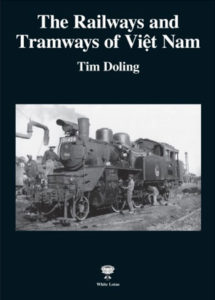 The Railways and Tramways of Việt Nam by Tim Doling
The Railways and Tramways of Việt Nam by Tim Doling
ISBN: 978-974-48-0188-3
White Lotus Press, Bangkok, Thailand, 2012
The result of two years of research, The Railways and Tramways of Việt Nam is the first in-depth English-language history of Việt Nam’s rail and tram networks, from their inception to the present day.
Drawing on both French and Vietnamese archival materials—many only recently made available to foreign researchers—and incorporating over 350 images and maps both in black-and-white and in colour, the book provides a unique insight into the development of rail transportation in French Indochina and the crucial role played the railways during the First and Second Indochina Wars.
Bringing the story up to date, it also examines the development of the national railway network since reunification in 1975 and the Vietnamese government’s ambitious plans to transform the railway landscape by creating a modern and competitive main-line and urban rail network.
With its fascinating subject matter, The Railways and Tramways of Việt Nam will be of interest not only to railway enthusiasts, researchers and historians, but also to the average visitor to this captivating country.
It is an essential tool for the “platform-end” rail fan, with appendices containing locomotive technical data, running numbers and depot allocations, a complete station/km listing for all operational Vietnamese railway lines and a directory of key contacts in the Vietnamese railway sector, including diesel depots and stabling points.
Order this book online at www.whitelotusbooks.com/bookdetail.php?id=E22669
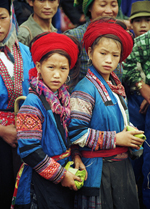
Red Hmông girls in Sin Hồ
Mountains and Ethnic Minorities: North West Việt Nam (second edition) by Tim Doling
Thế Giới Publishers, Hà Nội, 2010
The mountainous Tây Bắc is an area of sublime natural beauty populated by a large number of culturally-distinct ethnic minorities who have played an important role in the development of the Vietnamese nation.
Following the Hà Nội-Sơn La-Điện Biên Phủ-Lai Châu-Lào Cai circuit, this second edition of the original guidebook published in 1997 identifies areas of scenic beauty, introduces the customs, cultures and costumes of the many different ethnic groups and provides helpful background on the region’s turbulent history, including General Võ Nguyên Giáp’s campaign against the French in 1950-1954 which led to the Điện Biên Phủ victory of 1954.
Whether your preference is for trekking along misty mountain trails, visiting minority markets or exploring relics of the First Indochina War, the remote North West promises a truly unforgettable experience.
Reports
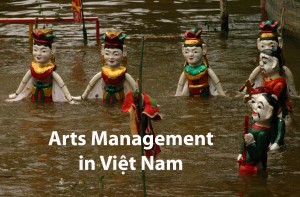
Click here to download a pdf of Arts Management Curriculum Development – A Case Study of Viet Nam in a Market Economy, Vol 1, Issue 1, December 2003, University of South Australia International Graduate School of Management

